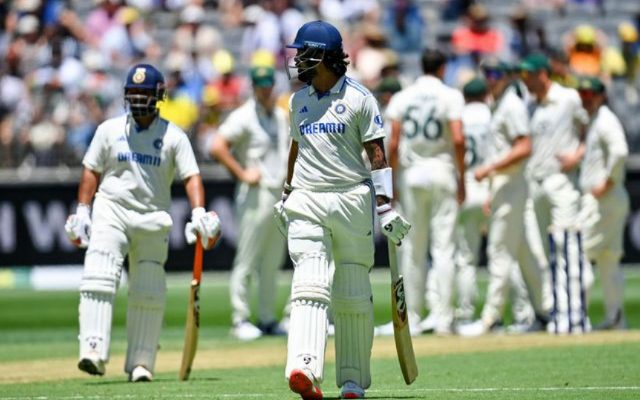KL Rahul’s dismissal on the opening day of the Border-Gavaskar Trophy 2024-25 in Perth has become a focal point of controversy. Battling Mitchell Starc’s fiery spell, Rahul played a patient knock, leaving the ball with precision and anchoring the innings amidst a faltering top order. However, his dismissal in the 23rd over, following a contentious Decision Review System (DRS) call, has sparked a debate over the protocol’s efficacy.
The Incident: A Case of Conclusive or Inconclusive Evidence?
Starc’s delivery brushed past Rahul as he attempted a leave, prompting the Australians to appeal for a faint edge. Initially ruled not out, the on-field decision was reviewed, bringing the third umpire into action. The ultra-edge revealed a faint spike as the ball passed the bat, but ambiguity arose due to potential contact between the bat and pad. Without a side-on angle to confirm the sequence of events, the decision rested on the available front-on angle and the spike.
Third umpire Richard Illingworth deemed the visual evidence of a deflection sufficient to overturn the on-field decision. However, this choice was controversial, as the evidence appeared inconclusive to some. The lack of additional angles further complicated the assessment, raising questions about the reliance on limited technology in a high-stakes match.
Technology and Protocol: Room for Improvement
The controversy also highlighted the technological limitations in place. Australia’s use of Virtual Eye technology, instead of the more widely used Hawk-Eye system, resulted in fewer high-speed camera angles. Hawk-Eye’s multi-camera setup could have potentially provided the missing evidence to resolve the uncertainty.
According to DRS protocol, when definitive evidence is lacking, the original on-field decision should stand. However, the interpretation of what constitutes “conclusive evidence” varies among officials. Illingworth believed the spike and deflection sufficed to overturn the call, but another umpire might have reached a different conclusion.
Ultimately, this incident underscores the subjective nature of DRS and the dependence on technological resources. While the system has improved decision-making accuracy in cricket, this case reveals areas for enhancement, especially in ensuring uniformity and reliability across venues.
Rahul’s visible disappointment while walking off symbolized the broader frustrations surrounding contentious DRS calls, leaving cricket fans and experts debating the balance between technology and human judgment in modern cricket.
Get the latest cricket news here, like us on Facebook, and follow us on Twitter and Instagram for more such updates.

